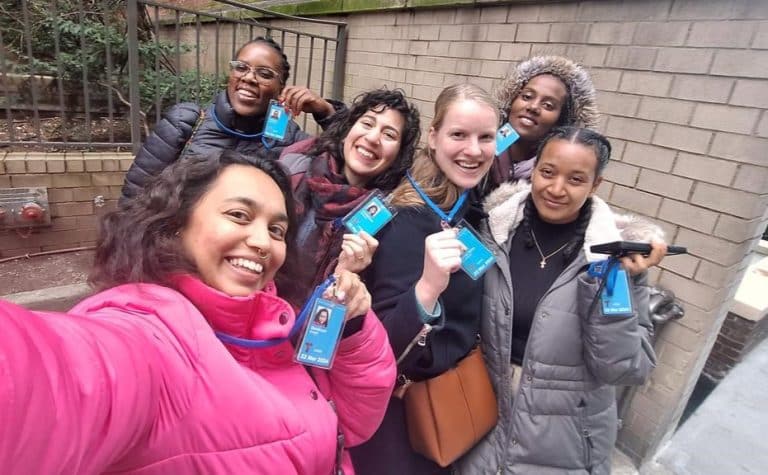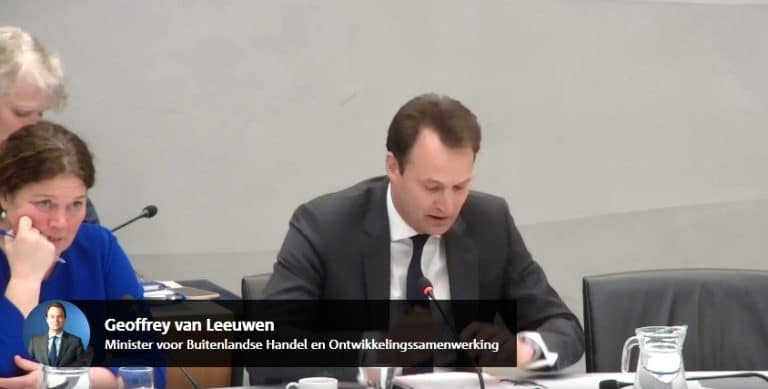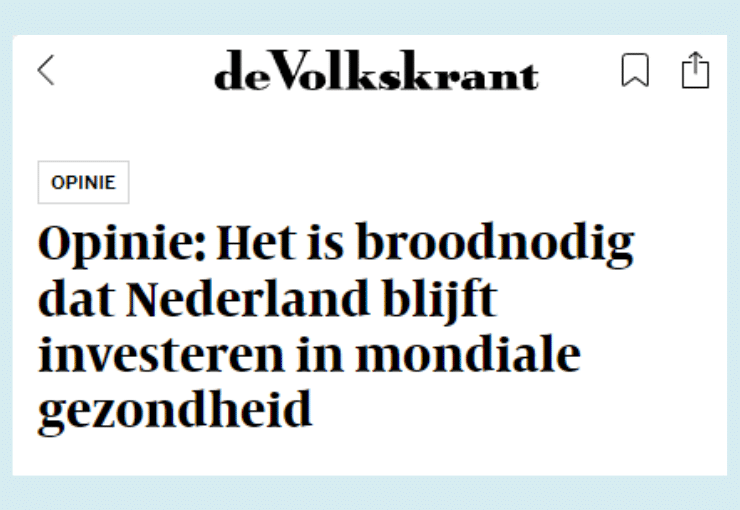Wemos has a mixed assessment of the zero-draft of the Pandemic Accord, which aims to improve the global pandemic prevention, preparedness and response. The text contains important elements for achieving global, equitable access to medical products, including attaching conditions to public funding and ways to overcome intellectual property barriers. When it comes to strengthening the health workforce and adequate financing, the text leaves much room for improvement. It currently does not contribute to sufficient public health budgets to cope with pandemics.
The Intergovernmental Negotiating Body (INB) for the Pandemic Accord of the World Health Organization (WHO) published the zero-draft of the accord on 1 February 2023. It initiates the long negotiating process that aims to lead to the adoption of the final text of the accord during the 77th World Health Assembly (WHA) in May 2024. This means that the current draft is the starting point for the negotiations between the WHO Member States.
Wemos sees positive features of the zero-draft that need to be maintained to ensure an equitable and effective pandemic prevention, preparedness and response. The provisions to achieve global, equitable access to medicines are particularly promising. Although the zero-draft acknowledges the importance of realising a strong health workforce and adequate financing, these areas still require much attention. Wemos has urgent recommendations regarding all these topics that WHO Member States should take into account in the negotiations.
Strengthening the health workforce
The zero-draft acknowledges the crucial importance of strengthening and sustaining a skilled and competent health and care workforce, including the need to address its gender disparities and inequalities. We hope to see this maintained in the upcoming negotiations, as well as the call for investing in a global public health emergency workforce.
Compliance with pre-existing norms and agreements
However, the draft could be more explicit in terms of expectations of the Member States to comply with pre-existing norms and agreements, such as the Health workforce requirements for universal health coverage and the Sustainable Development Goals, the Global health and care worker compact, the Working for Health Action Plan, and the WHO Global Code of Practice on the International Recruitment of Health Personnel.
Surge recruitment
The draft also needs to acknowledge that the investment in health workforce is a shared responsibility and that many development partners (donors) are reluctant to allow their financial resources to be invested in the ‘recurring costs’ of health worker salaries. This is already an obstacle in non-pandemic times, but unacceptable in times of crises. These development partners should be willing to make exceptions for surge recruitment of health and care workers during pandemic responses.
Outmigration and mobility of health workers
Additionally, the draft does not acknowledge the continuous outmigration and mobility of health and care workers from low(er)-income countries to high(er)-income countries, resulting in an unequal availability of health workers both regionally and globally, and thus in avoidable disparities in pandemic preparedness and response. From that perspective, article 12.1 falls short of what is needed and builds too much on voluntary support to low- and middle-income countries.
In addition, the Pandemic Accord must strengthen the special reporting of international recruitment and mobility of health and care workers during pandemics and monitor any high-income countries’ incentives and initiatives to attract and retain healthcare workers from countries with the highest shortages of health and care workers. The accord must make explicit the need for fair and ethical bilateral agreements between the source and destination countries, based on equal partnerships and with clear benefits for individual health workers, source countries and destination countries.
Equitable access to medical products
Conditions to public funding
Wemos is pleased to see language under article 9.2 that stimulates the use of attaching conditions to public funding of research and development (R&D) of medical products. Attaching conditions that safeguard affordable pricing, fair allocation and sharing of know-how and technology, provides governments an important tool to increase global, equitable access to medical products.
We recommend WHO and Member States to develop clear guidelines on how to insert these conditions into funding and licensing agreements, and to provide ready-to-use clauses. Additionally, instead of being optional as it is currently described in the zero-draft, attaching conditions to public funding of R&D should be mandatory to maximise equitable access.
Transparency of prices and purchasing contracts
A specific section of the zero-draft aims to increase the transparency on the amount of public funding provided by governments, and the prices at which the final medical products are sold. Wemos is pleased to see that the text includes a compulsory element for all recipients of public funding to publicly disclose their prices and purchasing contracts. We believe that this mandatory component will lead to a better balance in power between pharmaceutical companies and governments worldwide, and thus to fair pricing and more equitable access.
Overcoming intellectual property barriers
During the Covid-19 pandemic, we have seen the negative impact that intellectual property (IP) had on equitable access to Covid-19 pharmaceutical products. Manufacturers with the capacity to produce vaccines and treatments were withheld because of IP rights. This limited the sovereignty and self-reliance of especially low- and middle-income countries in supplying their population with the necessary pharmaceutical products.
Under article 7.4, the zero-draft describes how governments should overcome IP being a barrier in equitable access in times of pandemics. It is good that the zero-draft mentions the need to overcome IP barriers, but unfortunately the current text leaves too much room for interpretation on whether a WHO Member State will support an IP waiver when it is presented. Article 7.4a should unequivocally state that governments will support time-bound waivers of IP for all medical products that are pandemic related.
Technology transfer
To achieve sufficient pharmaceutical manufacturing capacity to deal with pandemics, sharing of know-how and technology for the production of medical products is of great importance. The WHO and its Member States must have a mechanism in place to facilitate technology transfer from technology holders to other manufacturers worldwide.
The text of the zero-draft suggests that manufacturing capacity should be increased in a way that enables equitable, geographical and strategical distribution and that technology transfer would be specifically needed in ‘developing countries’. However, the text provides very limited information on how transfer of technology will be facilitated by the WHO and its Member States. The text refers to so-called ‘technology transfer hubs’, without specifying the conditions and actions needed to make these hubs successful.
Sustainable, predictable and equitable financing
Importantly, the zero-draft recognises the need for investing in strong health systems and progressively realising universal health coverage. It also calls for sustained budget allocations to pandemic prevention, preparedness and response and health systems recovery (PPR & HSR) and proposes that funding for international cooperation and assistance on pandemic PPR & HSR will be based on a percentage of countries’ GDP.
Additionality of funding
This last clause (article 19.1d), calling for countries to contribute a – not yet specified – percentage of GDP to PPR and HSR activities, is a potentially valuable step towards a global system in which all countries contribute to public funding for global health in line with their capacity while benefitting according to their need.
However, the zero-draft text proposes to earmark this pooled funding for pandemic PPR and HSR. In a context in which existing global health funds are already experiencing difficulty mobilising the resources needed – including to fight AIDS, TB and malaria, and to strengthen maternal, child and adolescent health and health systems – such earmarking inevitably aggravates the competition between funds in the global health arena. This is illustrated by experience with the recently established Pandemic Fund, which has mobilised only a fraction of its funding target so far.
Considering several decades of underfunded health systems and the fiscal constraints many countries are facing due to economic crises, the Covid-19 aftermath, increasing debt levels and the global impact of the war in Ukraine, the Pandemic Accord needs to secure the additionality of funding for pandemic PPR & HSR. It could do so by calling for a percentage of GDP, of those countries whose GDP exceeds a certain threshold, to be allocated to global health, including but not limited to pandemic PPR and HRS, and setting this percentage sufficiently high to meet global health needs.
This would also be in line with principles of Global Public Investment and the language on ‘common but differentiated responsibilities’ in article 4.8 – which we support – describing how countries with more resources relevant for PPR should bear a ‘differentiated’ responsibility (in line with the principles of equity) to ensure that other countries are supported to the fullest extent, especially states with limited resources or increased vulnerabilities to pandemics.
Fiscal space for health budgets
We are disappointed to see no mention of major obstacles that prohibit increased domestic fiscal space especially in low- and middle-income countries – global tax injustice and debt – and the shared responsibility of all governments to urgently tackle these. Without changes to the global financial architecture that enable all countries to increase their public budgets, there will be no fiscal space for maintaining – let alone substantially increasing – budgets for health. This substantially limits countries’ ability to effectively prevent, prepare for and respond to pandemics.
Role of the private sector
First and foremost, public health and the fulfilment of the right to health is a public sector responsibility. Private resources cannot fill the public funding gap. Therefore, we reject the notion expressed in article 19.1c, that collaboration with the private sector plays a role in increasing domestic funding other than through the private sector paying their fair share of taxes.
Our recommendations on financing:
- Maintain the call for investing in strong health systems and progressive realisation of universal health coverage.
- Incorporate financial equity by calling for a formula of fair share contributions to global health overall, including for pandemic PPR and HSR, in line with the principles of Global Public Investment, such as ‘all contribute, all benefit, all decide’.
- Maintain the language on ‘common but differentiated responsibilities’ as defined in article 4.8 (see explanation above).
- Acknowledge the urgent need for reforms to the global financial architecture to mobilise domestic resources for health.
- Emphasise the need for public funding for public purpose in health, including for pandemic PPR and HSR.
Momentum to make a difference
The development of the Pandemic Accord provides WHO Member States a valuable opportunity to make a difference in protecting the health of all people in the world. It has the potential to strengthen health systems worldwide and to prevent and substantially limit the devastating effects of pandemics as we have experienced during Covid-19.
Global, equitable access to medical products is vital and Wemos applauds the features in the zero-draft that contribute to that. We call on the WHO Member States not to compromise on these features. A strong health workforce and adequate financing form the foundation of an effective pandemic prevention, preparedness and response. Unfortunately, the zero-draft still offers too little perspective to build this foundation firmly. We urge Member States to significantly improve the features on these topics, in order to establish a truly meaningful Pandemic Accord.
Also read our recommendations in our call for a meaningful Pandemic Accord, published in October 2022.




